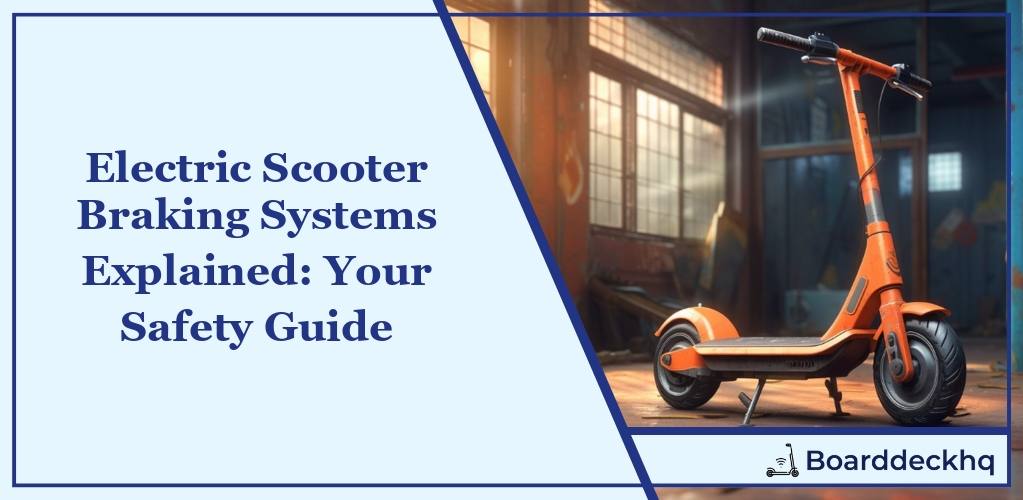Picture yourself gliding through the city streets on your electric scooter, the wind in your hair, the hustle and bustle blurring by. Suddenly, a pedestrian steps out in front of you. How quickly can you stop? The answer lies in understanding the complex world of electric scooter braking systems. It’s not just about speed and thrill, it’s about safety and control.
What we’ll cover:
- Grasping E-Scooter Braking Systems
- Varieties of E-Scooter Brakes
- The Core of Stopping: Hydraulic Disc Brakes
- Brake Upkeep and Problem-Solving
- Safety Add-ons: Regenerative Braking and ABS
- What’s Next for E-Scooter Braking Systems?
Buckle up, let’s dive into the mechanics of your electric scooter’s braking system and reveal why you should never overlook the importance of a good brake!
Understanding E-Scooter Braking Systems
Just as you wouldn’t dare step into a car without functioning brakes, the same principle applies to electric scooters. The braking system is not just a critical feature; it’s the lifeline of your E-Scooter, ensuring your safety while you zip through city streets or down scenic paths.
Electric scooters, like their traditional counterparts, have different types of brakes, each with its unique mechanism and benefits. Whether it’s drum brakes, disc brakes, foot brakes, or electronic brakes, each one plays a crucial role in bringing your E-Scooter to a safe and smooth stop.
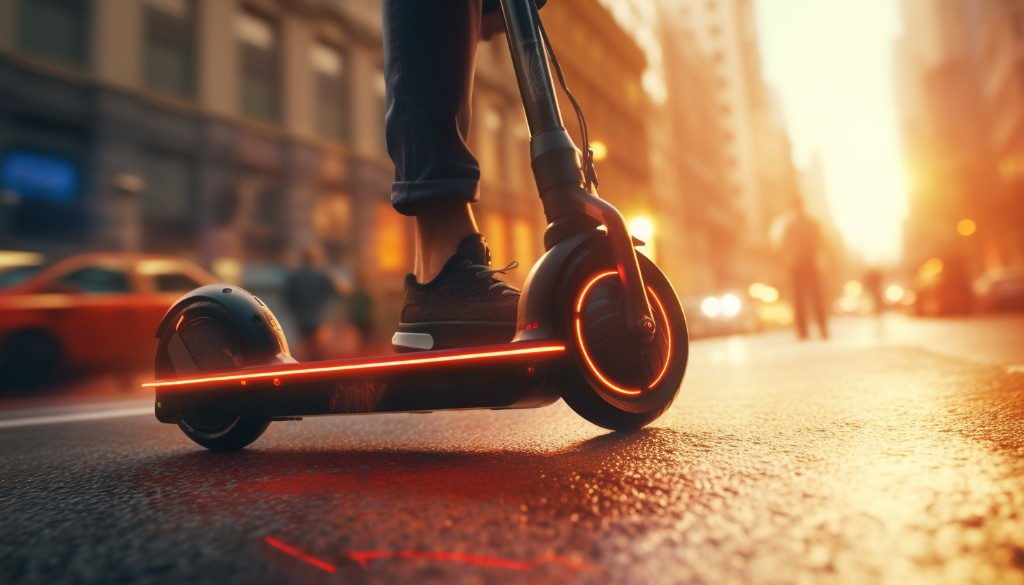
Braking System Components
When you squeeze the brake lever on your electric scooter, it’s not magic that brings you to a halt. It’s a complex symphony of components working in perfect harmony. The main players in this performance are the brake levers, brake pads, and brake discs.
The brake lever is your point of contact with the braking system. It’s what you squeeze to initiate the braking process. This action triggers the brake pads — small yet vital pieces of material that create friction against the brake discs.
Brake discs are typically metallic circles attached to the wheel hub. When you apply the brakes, the pads press against these discs, creating resistance that slows down and eventually stops the electric scooter.
Braking Mechanism in Electric Scooters
Now that we’ve identified the key components let’s take a deep dive into how brakes work in electric scooters.
Mechanical brakes, such as disc and drum brakes, operate on the principle of friction. When you squeeze the brake lever, it causes the brake pads to press against the brake disc or drum attached to the wheel. This contact creates friction, which slows down the wheel and brings your E-Scooter to a stop.
On the other hand, electronic brakes, also known as electric or regenerative brakes, use the electric scooter’s motor to slow down. When you activate the brake, it reverses the motor’s function. Instead of propelling the scooter forward, it starts to resist the motion, slowing down the scooter. A bonus of electronic brakes is that they can convert the kinetic energy produced during braking back into electrical energy, which is stored in the battery for later use.
Remember how I mentioned earlier that different types of brakes each have their unique mechanisms and benefits? Well, we’ve just scratched the surface here. For instance, disc brakes and drum brakes, two popular mechanical brakes used in electric scooters, have distinct differences in their design and functionality. But more on that later.
It’s also worth noting that each type of brake has its strengths and weaknesses, influencing how well they perform under different riding conditions. Whether you’re a casual rider or a seasoned E-Scooter enthusiast, understanding these nuances can help you make an informed decision when choosing or maintaining your electric scooter.

Types of E-Scooter Brakes
Now that we have a solid grasp on the basics of electric scooter braking systems, let’s dive into the various types of brakes that can be found in these machines and their pros and cons. Just like how different flavors make up a rich, satisfying ice cream sundae, there are several types of brakes that come together to form a comprehensive E-Scooter braking system. Let’s investigate the three main types: disc brakes, drum brakes, and electronic brakes.
Disc Brakes
Disc brakes are the most common type of brakes used in E-Scooters. They work by applying pressure on a rotor disc attached to the wheel, thereby slowing it down. Picture it like a hand squeezing a spinning plate to stop it from turning – that’s how disc brakes work.
Drum Brakes
Drum brakes, on the other hand, are enclosed within the wheel hub. They function by expanding brake shoes against the inside of the drum, creating friction and slowing the wheel down. Imagine pressing your hands against the inside of a spinning bowl to slow it down – that’s pretty much how drum brakes operate.
Electronic Brakes
Lastly, electronic brakes or regenerative brakes use the scooter’s motor to slow down the vehicle. When activated, they reverse the motor’s role from driving the scooter to generating resistance, effectively slowing it down. It’s like trying to run backwards on a treadmill – you’re using the same energy, but in reverse.
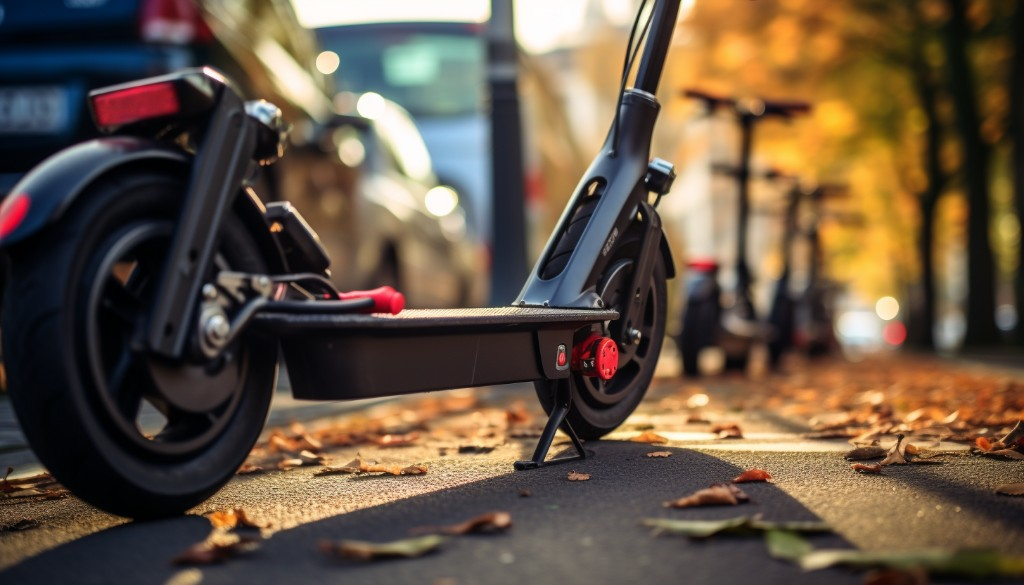
Disc Brakes vs Drum Brakes
Both disc and drum brakes have unique features that make them desirable. When it comes to performance, disc brakes often come out on top due to their superior heat dissipation capabilities. This means they’re less likely to overheat during prolonged use, providing consistent braking power.
In terms of maintenance, drum brakes usually require less attention as they are enclosed, protecting them from dust and debris. However, when it does come time for servicing, drum brakes can be more complicated to work on due to their intricate design.
As for cost, drum brakes are typically cheaper than disc brakes. But don’t let that fool you into thinking they’re inferior – remember, each type of brake has its own strengths and weaknesses, so you just need to decide which one suits your needs best.
Pros and Cons of Various Brake Types
Moving on, let’s weigh the pros and cons of different brake types. Hydraulic disc brakes are a popular choice for their reliable and powerful stopping performance. Imagine a superhero with the power to stop time – that’s kind of what hydraulic disc brakes bring to your electric scooter. However, they can be more expensive and require professional maintenance.
Mechanical brakes, or cable-actuated brakes, are simpler in design and easier to maintain, making them a great choice for DIY enthusiasts. Picture yourself as a handyman with a knack for fixing things around the house – mechanical brakes are your ideal project. However, they may not provide as much stopping power as hydraulic disc brakes.
All in all, each braking system has its own set of advantages and drawbacks. It’s crucial to understand these differences to make an informed decision about the best E-Scooter for your specific needs.
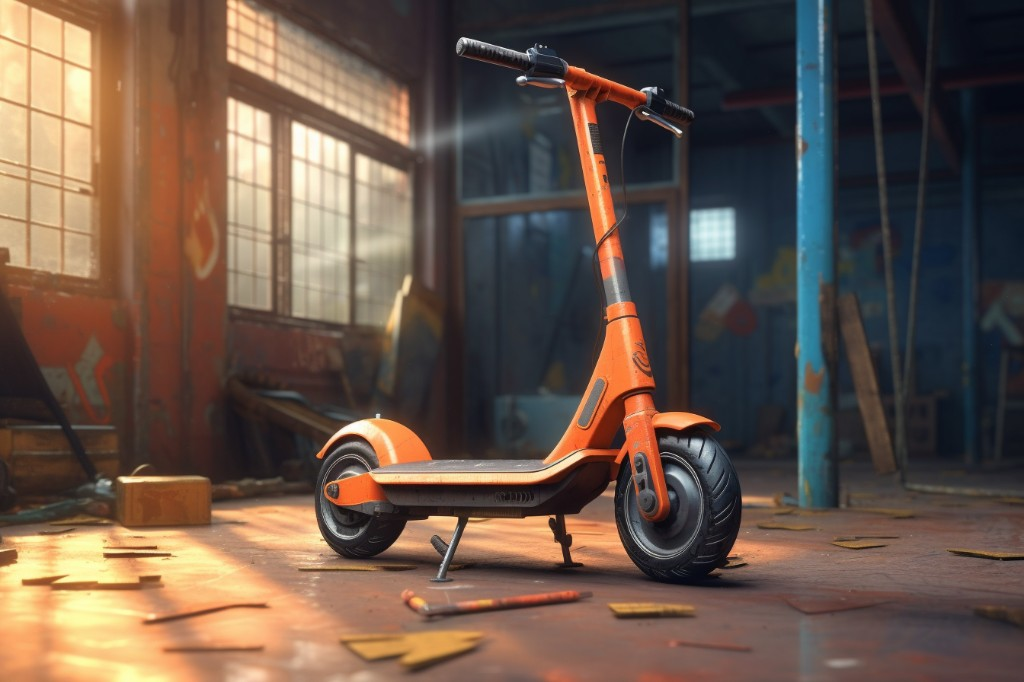
Hydraulic Disc Brakes: The Heart of Stopping Power
Imagine you’re driving a car, and a child suddenly darts out into the street. Your heart lurches in your chest as you slam on the brakes, the tires squeal, and the car halts just in time. That moment of sheer terror, followed by immense relief, is all thanks to one critical component in your vehicle: the hydraulic disc brakes.
These are the same type of brakes that have become the preferred choice in electric scooter brakes. But why? The answer lies in their superior stopping power and brake efficiency. Hydraulic disc brakes use a system of liquid-filled pipes and cylinders to apply pressure on the brake disc, bringing your electric scooter to a stop. When you apply pressure at one end, it gets transferred uniformly across the entire surface, ensuring a powerful, even braking force.
What makes these brakes so effective is their ability to dissipate heat. When you engage the brakes, friction generates heat. Too much heat can cause brake failure. However, hydraulic disc brakes are designed to dissipate this heat effectively, preventing overheating and ensuring consistent performance.
So when you’re cruising around on your electric scooter and need to stop suddenly, you can rely on your hydraulic disc brakes to deliver that necessary stopping power, providing both safety and peace of mind.

Brake Adjustment and Maintenance
Just like a musical instrument needs tuning to sound its best, your electric scooter brakes require regular adjustment and maintenance to perform optimally. This isn’t just about preserving your ride’s lifespan; it’s also about ensuring your safety every time you hop on your E-Scooter.
Brake adjustment involves fine-tuning the tension in your brake cables. If your brakes feel too loose or too tight, they may need adjusting. A simple rule of thumb is that when you squeeze the brake lever, it shouldn’t touch the handlebar. If it does, it’s time for some adjustment.
Brake maintenance, on the other hand, is all about keeping your brakes clean and well-lubricated. Dirt and debris can get lodged in your brake system, affecting its performance. Regular cleaning with a soft brush and soapy water can help keep your brakes functioning smoothly. And don’t forget about lubrication. The moving parts of your brake system need a good quality brake lubricant to reduce friction and prevent wear and tear.
In short, proper brake adjustment and maintenance can keep your electric scooter running smoothly and safely, giving you the confidence to tackle any ride.
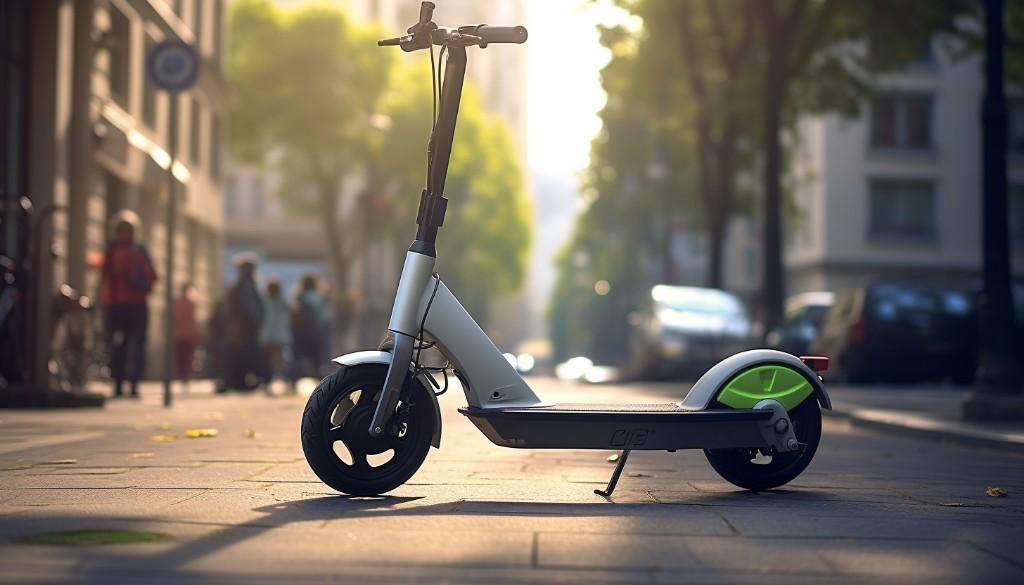
Troubleshooting Common Brake Problems
Even with regular maintenance, you may encounter some common brake problems. But fear not! Most issues can be diagnosed and fixed with a bit of know-how.
One common problem is brake squeaking or squealing. This can be due to dirt or dust in the braking system or worn-out brake pads. Cleaning the brakes and replacing the pads usually solve this issue.
Another frequent issue is brake dragging or sticking. This happens when the brakes don’t fully release after you let go of the lever, causing the scooter to slow down even when you’re trying to accelerate. This can often be fixed by adjusting the brake cables or replacing the brake calipers if they’re damaged.
And then there’s brake failure, which is every rider’s nightmare. This can be due to a variety of issues, from worn-out brake pads to hydraulic fluid leakage. In such cases, it’s best to consult a professional mechanic for a thorough brake troubleshooting.
So whether you’re hearing strange noises from your brakes or experiencing reduced braking power, don’t panic. With a bit of patience and perseverance, most common brake problems can be fixed, ensuring your electric scooter is always ready for the next adventure.
Safety Features: Regenerative Braking and ABS
Just like the human body has a mechanism to heal itself, modern electric scooters also possess a technology that helps them recuperate energy during rides. This technology, known as regenerative braking, is a phenomenal safety feature found in many electric vehicles, including E-Scooters. Picture this: it’s like having a mini power plant right within your scooter, recycling energy whenever you hit the brakes.
Regenerative brakes work by converting the kinetic energy, which is usually lost during braking, back into electrical energy. This energy is then stored in the battery for later use. The end result? You get a longer riding range, reduced wear on your brakes, and a smoother ride overall.
Now, imagine you’re scooting down a steep hill and suddenly a squirrel scampers across your path. You slam on the brakes, but instead of skidding out of control, your electric scooter comes to a safe and steady stop. That’s the magic of the anti-lock braking system (ABS), another crucial safety feature in E-Scooters.
The ABS prevents wheel lock-up during emergency braking situations by modulating brake pressure. This means you maintain steering control while stopping, reducing the chances of accidents.
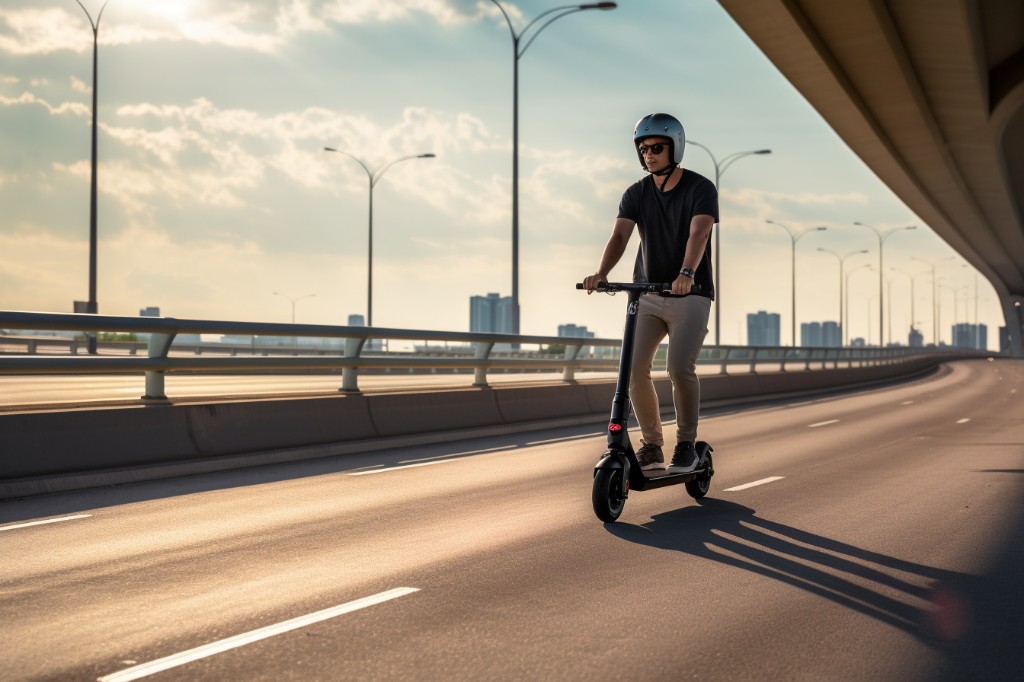
The Importance of Brake Testing
Let’s switch gears and discuss brake testing. Think of it as taking your electric scooter for a medical check-up. Just like regular health screenings help detect potential problems early, brake testing ensures that your braking system is in optimal condition.
Frequent brake testing is crucial for two main reasons. First, it helps identify any wear and tear or issues with the brake performance. Early detection means early rectification, which can prevent accidents and extend the lifespan of your E-Scooter. Second, it ensures that your electric scooter is always ready to stop at a moment’s notice, providing you with a safe and reliable ride.
Remember, riding an E-Scooter with a faulty braking system is like jumping out of a plane without a parachute. It’s reckless and dangerous. So, make brake testing a part of your regular maintenance routine to ensure you’re always safe on the road.
Brake System Inspection and Upgrade
Now, let’s dive deeper into the world of brake system inspection and potential upgrades. A brake system inspection involves checking for any signs of wear and tear, testing the braking force, and ensuring that all components are functioning properly. This process helps detect potential problems early and ensures that your brakes are always in top shape.
Sometimes, an inspection may reveal that your current braking system isn’t up to par. Perhaps it’s old and worn out, or maybe it just doesn’t provide the stopping power you need for your riding style. In such cases, considering a braking system upgrade can be a game-changer.
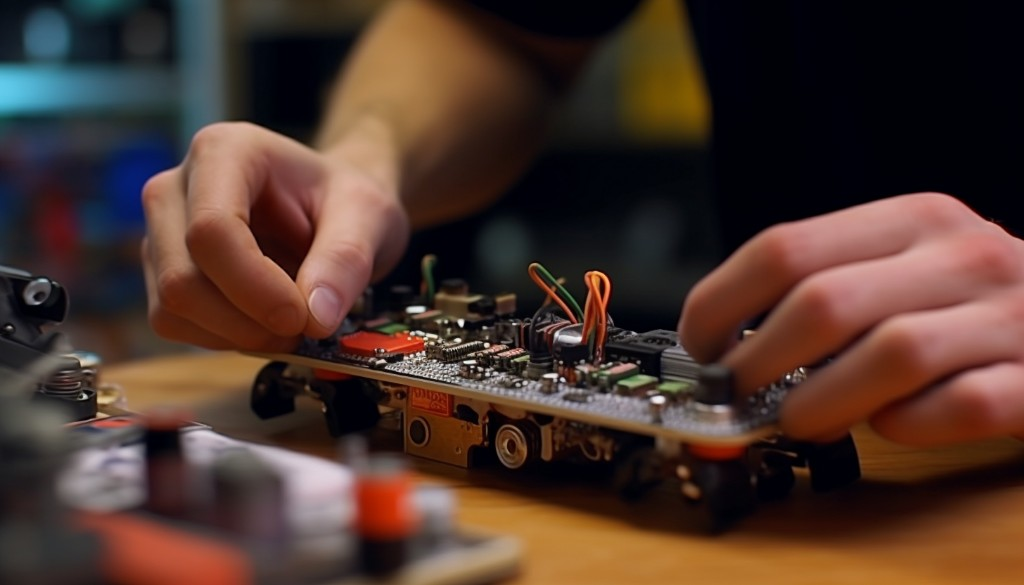
Upgrading your braking system can improve your electric scooter’s stopping power, giving you more control over your ride. Plus, with advancements in technology, there are many high-performance options available that offer smoother and more efficient braking.
So, whether you’re a casual rider or an adrenaline junkie, keeping your braking system in top shape should be your top priority. Remember, your safety is directly linked to your braking system’s performance. Regular inspections, timely upgrades, and understanding the technology behind your E-Scooter’s brakes are all crucial steps in ensuring a safe and enjoyable ride.
Closing Thoughts
The realm of electric scooter braking systems is multifaceted, with an array of types and features designed to ensure rider safety. Understanding these systems is critical, whether you’re a casual rider or an E-Scooter aficionado. From the powerful hydraulic disc brakes at the heart of stopping power to the importance of regular brake maintenance and troubleshooting, it’s clear that these systems play a vital role in electric scooter operation.
Moreover, advanced safety features such as regenerative braking and ABS underscore the impressive technological strides in this field. Looking forward, it’s exciting to envisage how future advancements might further enhance braking system design, potentially even boosting electric scooter range. The future of E-Scooter braking systems is poised for evolution, promising to bring us safer, more efficient rides.
Frequently Asked Questions
How do E-Scooter brakes work?
E-Scooter brakes work by applying friction to the wheels to slow down or stop the scooter. There are different types of brakes used in electric scooters, including hydraulic disc brakes, drum brakes, and regenerative brakes, each with its unique way of applying this friction.
How can I maintain my E-Scooter brakes?
Maintaining your electric scooter brakes involves regular inspections for any visible damage or wear. It’s also important to keep them clean and free of debris. If you notice any issues such as reduced stopping power or unusual noises, it may be time for professional servicing or replacement parts.
What are regenerative brakes and how do they work?
Regenerative brakes are a type of braking system that recovers energy during braking and feeds it back into the battery. When you apply the brakes, the motor operates in reverse to slow the scooter down, simultaneously generating electricity that recharges the battery.
Can I upgrade my E-Scooter’s braking system?
Yes, it’s possible to upgrade your electric scooter’s braking system. However, the process can be complex and requires technical knowledge. It’s best to consult with a professional or a reputable service center for advice and installation.
What is the difference between disc brakes and drum brakes in E-Scooters?
Disc brakes in E-Scooters work by squeezing a disc attached to the wheel between two brake pads, creating friction that slows the scooter. Drum brakes, on the other hand, have shoes inside a drum that expand against the drum’s inner surface to create friction. Disc brakes generally provide stronger stopping power and better heat dissipation compared to drum brakes.
